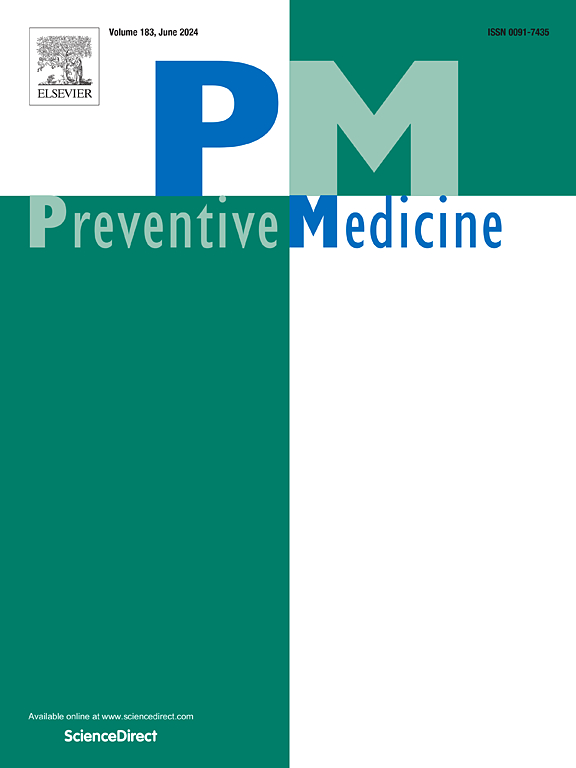Digital health strategies for sudden infant death syndrome prevention: A scoping review
IF 3.2
2区 医学
Q1 MEDICINE, GENERAL & INTERNAL
引用次数: 0
Abstract
Objective
Sudden infant death syndrome (SIDS) has been widely studied, leading to the development of various preventive interventions. However, the application of digital health strategies for SIDS prevention remains largely unexplored. This study was conducted to identify and characterize the digital health strategies that have been utilized to address SIDS.
Methods
The Preferred Reporting Items for Systematic reviews and Meta-Analyses extension for scoping reviews and the Arksey and O'Malley methodological framework were used to guide this review. PubMed, CINAHL, and Ovid MEDLINE were searched for relevant peer-reviewed manuscripts published from database inception to April 2024. Peer-reviewed studies in English that utilized digital health strategies were included. Articles that did not explicitly indicate the use of digital health interventions for SIDS prevention were excluded.
Results
Eighteen peer-reviewed manuscripts were included in this review. The type of digital health technology and/or strategies used included video, livestream, digital document, online/web-based program, telephone, blog posts, Instagram post, home monitor, email, and text message. SIDS prevention efforts employed included education, sleep guidelines, sleep instructions, sleep recommendations, modeling, skills training, and safe sleep policy.
Conclusions
Overall, the application of digital health strategies for SIDS prevention remains limited. More research is needed to examine how digital health technologies can be better employed to address SIDS.
预防婴儿猝死综合征的数字健康策略:范围审查。
目的:婴儿猝死综合征(SIDS)已被广泛研究,导致各种预防干预措施的发展。然而,数字卫生战略在小岛屿发展中国家预防方面的应用在很大程度上仍未得到探索。进行这项研究是为了确定和描述用于解决小岛屿发展中国家问题的数字卫生战略。方法:采用系统评价的首选报告项目和范围评价的元分析扩展以及Arksey和O'Malley方法框架来指导本综述。检索PubMed, CINAHL和Ovid MEDLINE从数据库建立到2024年4月发表的相关同行评议手稿。采用数字健康策略的英文同行评议研究也包括在内。未明确指出为小岛屿发展中国家预防使用数字卫生干预措施的文章被排除在外。结果:18篇同行评议的论文被纳入本综述。使用的数字健康技术和/或策略类型包括视频、直播、数字文档、在线/基于网络的程序、电话、博客文章、Instagram帖子、家庭监视器、电子邮件和短信。预防小岛屿发展中国家所采取的措施包括:睡眠指南、睡眠指导、睡眠建议、建模、技能培训和安全睡眠政策。结论:总体而言,数字卫生战略在小岛屿发展中国家预防中的应用仍然有限。需要更多的研究来审查如何更好地利用数字卫生技术来解决小岛屿发展中国家的问题。
本文章由计算机程序翻译,如有差异,请以英文原文为准。
求助全文
约1分钟内获得全文
求助全文
来源期刊

Preventive medicine
医学-公共卫生、环境卫生与职业卫生
CiteScore
7.70
自引率
3.90%
发文量
0
审稿时长
42 days
期刊介绍:
Founded in 1972 by Ernst Wynder, Preventive Medicine is an international scholarly journal that provides prompt publication of original articles on the science and practice of disease prevention, health promotion, and public health policymaking. Preventive Medicine aims to reward innovation. It will favor insightful observational studies, thoughtful explorations of health data, unsuspected new angles for existing hypotheses, robust randomized controlled trials, and impartial systematic reviews. Preventive Medicine''s ultimate goal is to publish research that will have an impact on the work of practitioners of disease prevention and health promotion, as well as of related disciplines.
 求助内容:
求助内容: 应助结果提醒方式:
应助结果提醒方式:


